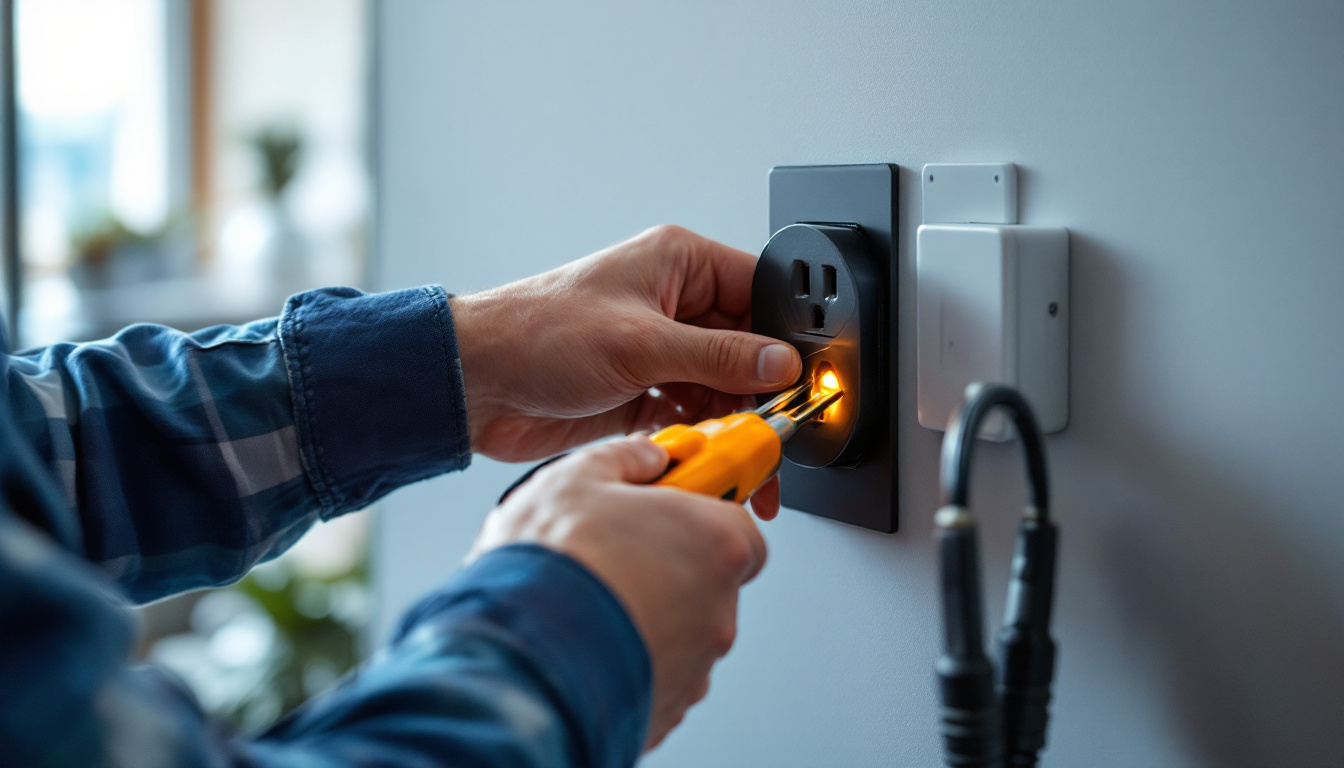

When it comes to indoor lighting, the right fixtures can make all the difference in creating a welcoming and functional environment. For lighting contractors, understanding the nuances of various fixtures is essential for delivering quality installations that meet client expectations. This article serves as a comprehensive checklist for lighting contractors, ensuring that every aspect of indoor light fixture selection and installation is covered.
Before diving into the specifics of light fixtures, it is crucial to grasp the fundamental principles of indoor lighting. Proper lighting enhances aesthetics, functionality, and safety within a space. The three primary types of lighting include ambient, task, and accent lighting.
Ambient lighting provides the overall illumination of a room. It is essential for creating a comfortable atmosphere and should be evenly distributed throughout the space. Common sources of ambient lighting include ceiling-mounted fixtures, chandeliers, and wall-mounted sconces. The choice of ambient lighting can significantly influence the mood of a room; for instance, warm-toned bulbs can create a cozy and inviting environment, while cooler tones can promote alertness and focus. Additionally, dimmable options allow for flexibility, enabling you to adjust the brightness according to the time of day or the occasion.
Task lighting focuses on specific areas where activities such as reading, cooking, or working take place. This type of lighting should be brighter and more direct than ambient lighting. Examples include desk lamps, under-cabinet lights, and pendant lights over kitchen islands. When selecting task lighting, it is important to consider the height and placement of fixtures to minimize shadows and glare, ensuring that the light effectively illuminates the work area. Furthermore, incorporating adjustable task lights can enhance functionality, allowing users to direct light precisely where it is needed most, thus improving productivity and comfort.
Accent lighting is used to highlight specific features in a room, such as artwork or architectural details. It adds depth and interest to a space. Track lighting and wall-mounted fixtures are popular choices for accent lighting. This type of lighting not only draws attention to focal points but also creates a layered lighting effect, enriching the overall ambiance of the room. By strategically placing accent lights, you can transform a plain wall into a gallery-like display or emphasize unique textures and colors within your decor. Moreover, using dimmers with accent lights can help create a dramatic effect, allowing you to adjust the intensity based on the time of day or the mood you wish to convey.
Selecting the appropriate fixtures is a critical step in any lighting project. The choice of fixtures can significantly impact the overall design and functionality of a space. Here are key factors to consider when choosing indoor light fixtures.
The style of the light fixture should complement the overall design of the room. Whether the space is modern, traditional, or eclectic, there are fixtures available that can enhance the aesthetic appeal. Consider the materials, colors, and shapes of the fixtures to ensure they align with the client’s vision. For instance, sleek metal finishes can provide a contemporary touch, while ornate glass designs may evoke a vintage charm. Additionally, think about how the fixture’s design interacts with other elements in the room, such as furniture and decor, to create a cohesive look that feels intentional and well-curated.
Size matters when it comes to light fixtures. A large chandelier may overwhelm a small room, while a tiny pendant light might get lost in a spacious area. Measure the dimensions of the space and the fixture to ensure a harmonious balance. Additionally, consider the height at which fixtures will be installed to maximize their impact. For example, in dining areas, hanging fixtures should be positioned to allow for unobstructed views across the table while providing adequate illumination. Furthermore, consider the scale of the room’s architecture; a grand foyer may call for a statement piece that draws the eye upward, while a cozy nook may benefit from smaller, more intimate lighting options that create a warm ambiance.
Each fixture should serve a specific purpose. For instance, a fixture intended for task lighting should provide adequate brightness without causing glare. Evaluate the needs of the space and choose fixtures that fulfill those requirements effectively. In a home office, adjustable desk lamps can offer focused light for reading and writing, while ambient lighting can create a comfortable environment for brainstorming sessions. Additionally, consider the versatility of fixtures; dimmable options can allow for a range of lighting moods, transforming a space from bright and energetic during the day to soft and relaxing in the evening. Incorporating smart lighting solutions can also enhance functionality, allowing users to control brightness and color temperature with ease, adapting to different activities and times of day.
Understanding the electrical requirements of light fixtures is essential for safe and efficient installations. This section outlines key electrical considerations that lighting contractors should keep in mind.
Wattage indicates the amount of energy a fixture consumes, while lumens measure the brightness of the light produced. It is essential to choose fixtures that provide the right amount of lumens for the intended use. For example, a kitchen may require brighter lighting than a bedroom.
Most indoor light fixtures operate on standard voltage, but it is crucial to verify compatibility with the existing electrical system. Some fixtures may require low-voltage systems or specific transformers. Always check the specifications to avoid installation issues.
Energy-efficient fixtures not only reduce electricity costs but also contribute to environmental sustainability. Consider options such as LED fixtures, which consume less energy and have a longer lifespan compared to traditional incandescent bulbs. Educating clients about the benefits of energy-efficient lighting can also enhance their satisfaction.
Proper installation is vital to ensure the safety and functionality of indoor light fixtures. Here are some best practices that lighting contractors should follow during the installation process.
Ensuring that wiring is done correctly is essential for the safety of the installation. Use appropriate gauge wires and follow local electrical codes. Additionally, consider using wire nuts or connectors to secure connections and prevent any potential hazards.
The mounting height and placement of fixtures can greatly affect their performance. For example, pendant lights should typically hang 30 to 36 inches above countertops or tables. Consider the purpose of the fixture when determining its placement to maximize functionality and aesthetics.
After installation, it is crucial to test each fixture to ensure it operates correctly. Check for any flickering lights or issues with dimming features. Make necessary adjustments to the positioning or wiring as needed to achieve optimal performance.
Even the best-installed fixtures require maintenance and occasional troubleshooting. Understanding common issues and their solutions can save time and ensure client satisfaction.
Dust and grime can accumulate on light fixtures, diminishing their brightness and aesthetic appeal. Regular cleaning is essential to maintain their appearance and functionality. Use appropriate cleaning solutions and methods based on the fixture’s material to avoid damage.
Over time, bulbs will burn out and need replacement. It is important to educate clients on the types of bulbs used in their fixtures and how to replace them safely. Providing a guide or even offering to handle replacements can enhance the client experience.
If a fixture is not functioning properly, it may be due to electrical issues. Common problems include tripped circuit breakers or faulty switches. Understanding how to diagnose these issues can help contractors provide quick solutions and maintain client trust.
The world of indoor lighting is constantly evolving, with new trends emerging that can enhance both aesthetics and functionality. Staying updated on these trends can help lighting contractors provide cutting-edge solutions to their clients.
Smart lighting systems allow users to control their fixtures remotely, often through smartphone apps or voice commands. These systems can enhance convenience and energy efficiency. Contractors should familiarize themselves with various smart lighting options to offer clients innovative solutions.
Minimalist lighting fixtures are gaining popularity for their sleek and unobtrusive designs. These fixtures often feature clean lines and simple shapes, making them suitable for modern interiors. Incorporating minimalist options can appeal to clients looking for a contemporary aesthetic.
Biophilic design focuses on incorporating natural elements into indoor spaces. Lighting fixtures that mimic natural light or use organic materials can create a calming atmosphere. Contractors should consider how to integrate these elements into their projects for a more holistic approach to lighting design.
Indoor lighting is a critical aspect of any interior design project. By following this comprehensive checklist, lighting contractors can ensure that they cover all essential elements, from fixture selection to installation and maintenance. Understanding the various types of lighting, electrical considerations, and current trends will empower contractors to deliver exceptional results that meet and exceed client expectations.
In a competitive market, staying informed and adaptable is key. By embracing new technologies and design philosophies, lighting contractors can position themselves as leaders in the industry, offering clients not just fixtures, but complete lighting solutions that enhance their living spaces.
Ready to elevate your lighting installations with the finest selection of fixtures? Look no further than LumenWholesale, where we provide contractors with exceptional, spec-grade lighting products at the most competitive wholesale prices. Say goodbye to local distributor markups and hello to our premium, industry-standard lighting solutions. With free shipping on bulk orders, you can trust that you’re getting the best value without any hidden costs. Enhance your projects with the quality, affordability, and convenience that only LumenWholesale can offer. Discover our extensive range and take advantage of unbeatable wholesale deals by visiting Wholesale Lighting at the Best Value today.

Discover essential strategies for effectively training your team in LED fluorescent tube replacement.

Discover the essential insights every lighting contractor needs to know about power outlets.

Discover how low bay industrial LED lighting is revolutionizing the work of lighting contractors by offering simplified installation, enhanced energy efficiency, and superior illumination.

Discover the essential insights from Jacques Risler’s expertise in lighting contracting.
Get notified when NEW deals are released.
Optimize your budget with wholesale discounts.
Only top-quality, specification-grade lighting products.
No additional costs at checkout - what you see is what you pay.
We understand the unique needs of contractors.